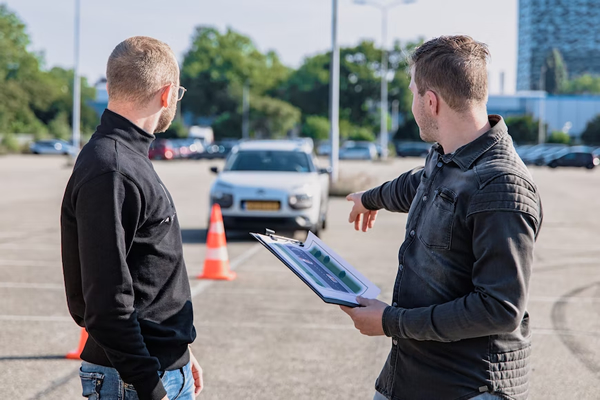The roadmap to becoming a skilled for-hire vehicle (FHV) driver is not just about navigating from point A to point B. It involves comprehensive understanding of road safety, vehicle control, and customer service. As the demand for dependable and professional FHV drivers rises, those aspiring to carve a niche in this field must seek quality FHV driver training. Let’s delve into what makes driver education pivotal and how proper training can make the journey towards mastering the road an assured success.
Understanding the Need for Specialised FHV Driver Training
FHV operators are expected to be at the top of their game, considering they often deal with a varied clientele, traffic conditions, and extended periods behind the wheel. Specialised training is not just a legal formality; it is essential for ensuring the safety and satisfaction of both the driver and passengers. The right training institution equips drivers with the necessary tools to navigate the complexities of today’s roadways.
When searching for an FHV driver training programme, consider one that covers a broad range of skills. This includes understanding vehicle dynamics, advanced driving techniques, and the local regulations affecting FHVs. Additionally, a focus on customer relations is just as critical as technical road skills.
Components of Comprehensive FHV Driver Training
The curriculum of an FHV driver training course can be quite expansive. It must provide an all-rounded educational experience. This usually covers vehicle maintenance, to ensure that the vehicle remains in a safe, working condition; geographical knowledge, so that drivers can navigate efficiently; and service excellence, the pivotal skill that separates a good FHV driver from a great one.
Effective communication is another core topic within these training courses. Drivers learn how to interact with passengers from different backgrounds and how to handle potentially challenging situations. The ability to communicate clearly and professionally can greatly enhance the passenger experience.
Road safety remains the cornerstone of FHV driver training. Courses must delve into the nuances of defensive driving, risk identification, and response techniques. Also, drivers must be taught about the importance of staying up-to-date with the latest road laws and traffic updates.
Choosing the Right Training Provider
Selecting the right training provider is crucial for cultivating competent FHV drivers. Accredited and experienced training institutions, such as those offering comprehensive FHV driver training, are more likely to provide an education that meets the current industry benchmarks.
Prospective drivers should ensure that the selected training provider offers flexible schedules to accommodate them, especially if they are switching careers or balancing other responsibilities. Facilities that provide a combination of classroom learning and practical, hands-on experience offer the best preparation for real-world driving.
The reputation of a training institution also plays a big part in its quality assessment. Look for reviews and testimonials from past students to gauge the effectiveness of the training program. Connecting with industry professionals for their recommendations can also guide your decision-making process.
The Role of Technology in FHV Driver Education
As technological advancements continue to shape the transportation industry, driver training programs have also evolved. The use of simulators and virtual reality setups has dramatically improved the training experience, offering realistic and safe environments for drivers to hone their skills.
Additionally, with the rise of ride-sharing apps and the imminent arrival of automated vehicles, contemporary FHV driver training must now also incorporate lessons on adapting to new technologies. This includes navigation systems, ride hailing platforms, and an understanding of electric vehicle technology.
The groundwork laid by a solid driver education programme will not only prepare drivers for the practical aspects of the job but also instil in them a mindset of constant learning and adaptation—key traits in the rapidly evolving field of personal transportation services.
Investing in Continuous Professional Development
The conclusion of a formal FHV driver training course is not the end of a driver’s educational journey. Industry standards, vehicle features, and road regulations are constantly changing. Continued professional development ensures that drivers can maintain a high level of service and safety.
Through refresher courses, seminars, and workshops, FHV operators can keep abreast of new laws and technological innovations within the transportation sector. A commitment to ongoing education demonstrates a driver’s dedication to their craft and their passengers’ wellbeing.
The road towards mastery in FHV driving is both demanding and rewarding. An extensive training programme lays the foundation, but it is the continuous pursuit of excellence and adaptation to change that truly shapes an exceptional FHV driver. By investing in quality FHV driver training, aspirants can set themselves apart in a competitive industry and ensure the highest standards of road safety and passenger satisfaction.
Conclusion
Mastering the road requires more than just technical skill—it demands a comprehensive understanding of diverse aspects that go into FHV driving. Whether it is keeping up with the latest industry trends, adapting to new technologies, or enhancing customer service skills, a thorough FHV driver training program is the first significant milestone on this journey.
With the pointed guidance of a reputable training provider, and through a dedication to lifelong learning, FHV drivers can expect to not only meet but exceed the expectations of their discerning clientele. Those ready to embark on this path will find that mastering the complexities of the road can indeed lead to a fulfilling and distinguished career within the driving profession.

